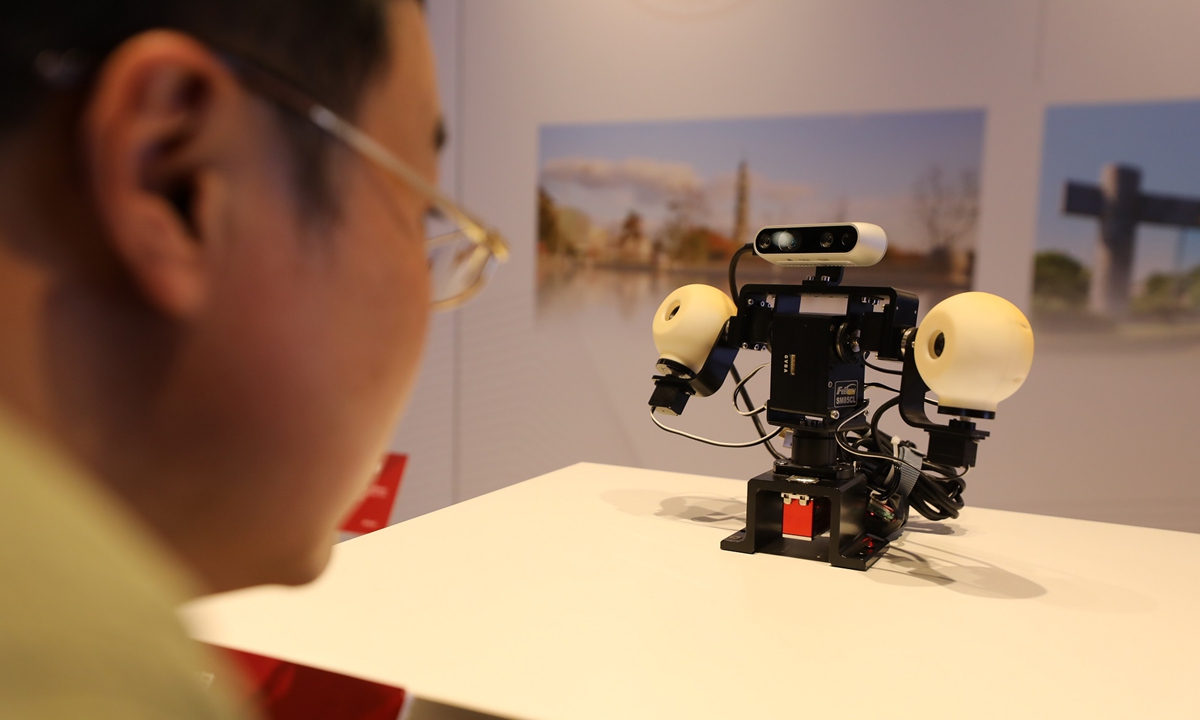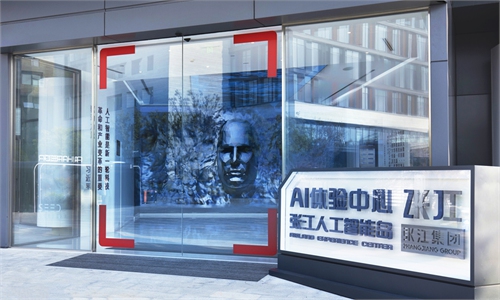
A bionic human eye is on display in Zhangjiang Hi-tech Park, Shanghai. Integrating core technologies such as intelligent sensors and smart controls, the world-class device can achieve a real-time edge in computing to recognize human faces, and it has autonomous interaction capability. Photo: Yang Hui/GT
One of China's first national innovation demonstration zones in Shanghai, Zhangjiang, where the country's first self-developed large passenger plane C919's R&D center is located, has shown its mature innovation - especially in three major industries - in the past 10 years, and also becoming the epitome of China's efforts to improve its technological and innovative capacities.
By the end of 2020, Zhangjiang demonstration zone had become the most innovative region in Shanghai, and had accommodated 330 national level R&D institutions, with a number of scientific projects accelerating establishment such as the Tsung-Dao Lee Institute, Zhu Guangya Strategic Technology Institute, Zhangjiang Pharmaceutical Lab and Shanghai Research Center for Quantum Sciences, Wu Qing, vice mayor of Shanghai said during a press conference held in Shanghai on Tuesday.
Since 2009, China has approved over 20 regions to build national innovation demonstration zones, which would benefit from national supportive policies and were expected to be models for other regions in high-tech innovation. Zhangjiang was approved by the State Council in 2011.
"The zone has attracted about 100,000 science and technology enterprises and over 9,000 national-level high-tech enterprises," Wu said, noting that the zone has developed strongly in three major industries: integrated circuit, biomedicine and artificial intelligence (AI).
The integrated circuits sector in Zhangjiang has become an industrial base with the most complete industrial chain, most advanced comprehensive technology and strongest capacity for independent innovation in China, with its production and sales volume hitting 180 billion yuan ($27.4 billion) in 2020, accounting for one fifth of the country's total volume.
In 2019, one third of the country's Class-I drugs were created in Zhangjiang, while over 2,400 AI enterprises were developing in the region, accounting for 70 percent of the city's total number.
Despite the epidemic in 2020, the revenue of certain enterprises in the region still increased 10.8 percent year-on-year, making a stable contribution toward Shanghai's GDP, according to the Shanghai municipal government.
Besides innovative industries, the region has made efforts to attract quality talents both from home and abroad, with the first foreigners' permanent residence service center built in 2019.
China's first national innovation demonstration zone was set up in 2009 in Beijing's Zhongguancun tech hub.


